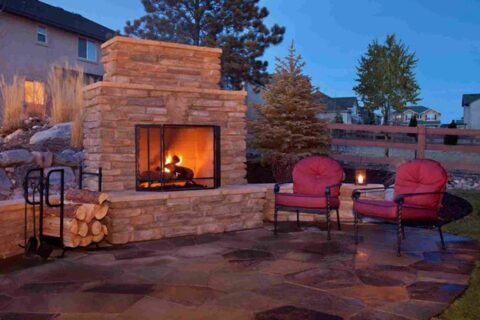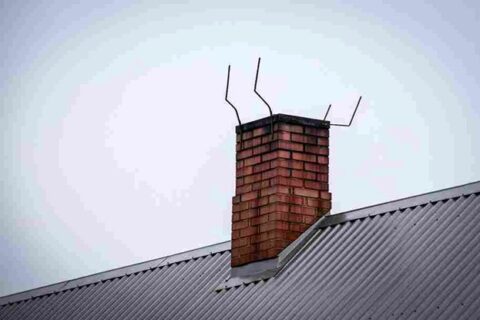Fire Safety Tips For The Holidays and Beyond
The holidays often involve large get-togethers, wrapping paper, and a fire as a focal point. Fire safety should always be a priority, but it’s more important than ever during these times.
Here are some key tips designed to keep your family fire safe during the holidays.
Tip 1: Burn only the fuel designed for the fireplace
Have you been tempted to throw wrapping paper into the fire? This is a bad idea.
The fireplace is not a trash incinerator. Materials like wrapping paper and cardboard burn incredibly hot. They can and will ignite combustibles within the chimney.
Instead, burn only the wood or fuel designed for use in your fireplace.
Tip 2: Place flammables at least three feet from the fireplace
If you really want to hang your stockings with care, you’ll place them at least three feet away from the fireplace. This also goes for gifts and other flammables.
Three feet or more is a good rule to prevent these items from overheating and catching fire.
Inevitably, as the holiday get-together gets under way, someone will place a flammable item within this three-foot zone. Don’t let them.
Tip 3: Have your chimney swept and inspected before the holidays
If you don’t know what shape your chimney is in, you shouldn’t use it.
The longer you use your fireplace—without having it swept and inspected—the dirtier and more dangerous it becomes. When the buildup inside the chimney stays hot for an extended period of time, it can combust and cause a chimney fire.
This is definitely not the kind of holiday event you want at your house.
Tip 4: Utilize your spark screen
Spark screens prevent larger sparks from flying out of the fireplace and catching something afire.
Whether or not the flying spark ignites something, it can still injure pets, children and anyone who is nearby.
The very best way to make certain your fire does not injure anyone or start a fire is to pull the spark screen shut.
Tip 5: Examine the hearth and mantel
Hearths and mantels are the fireplace items that most frequently catch fire.
The good news is there’s usually a sign that something’s wrong before a fire breaks out. Take a close look at the fireplace and scour for any cracks, breaks, paint that’s peeling, or discoloration.
Usually, the fireplace hearth or mantel will begin to show discoloration as it dries out. Paint or wood cracking can also be an indication of potential fire.
Tip 6: Watch for excessive or consistent smoke
Wood-burning fireplaces always produce smoke. However, if you can spot the smoke in the air, or the smoke is a regular occurrence, something may be leaking or smoldering in your chimney.
It is not uncommon for dismantled chimneys to contain burned wood or other charred portions that didn’t quite catch fire. Consistent smoke from a fire could be an indication of this type of situation.
Tip 7: Check your gas vents annually
Carbon-monoxide poisoning causes thousands of deaths each year. In order to protect your household, you should have the vents checked annually for any type of gas-burning heating appliance.
If the vent needs cleaning, do it. Here’s why. The state of your vents changes from year to year. They get hot, cold or wet. Animals can nest in the vents. The vent may expand outwards or contract. Bricks may fall in and block the vent.
It’s not a question of cleaning the vents because they are dirty. Rather, this is a mechanical problem that may occur over the passage of time.
A gas furnace is the single most dangerous appliance, in terms of carbon monoxide. Should the vent become blocked, your furnace can emit enough carbon monoxide to kill.
A gas fireplace can do this, too. However, most people don’t use their gas fireplace for days and days at a time. This said, homeowners have become seriously ill as a result of carbon monoxide poisoning from a blocked vent on a gas fireplace.
Make certain the vents on your gas-heating appliance are checked each year and cleaned if necessary. You should also have a carbon-monoxide alarm on each floor of your house and outside of bedrooms.
Tip 8: Have your gas dryer vent inspected annually
Gas dryer vents get hotter than electric dryer vents, so they catch fire more readily.
The primary concern with gas dryer vents is the flammability of lint. If you own a gas dryer, it should be checked annually for lint buildup.
If necessary, the vent should be cleaned.
Laundry may be tedious, but it shouldn’t be life-threatening.
Tip 9: Establish a fire-escape plan
It is common for one or more family members to panic when a house or fireplace catches fire.
Some of the worst fire stories involve family members returning to a burning house to rescue someone who had already evacuated. Make a plan. Establish a place to meet outside of the home ahead of time, so that no matter how family members exit, you can make certain everyone is accounted for.
This may be a simple strategy, but it might save lives.
We hope these tips will contribute to a safer holiday this year and in the coming years.


